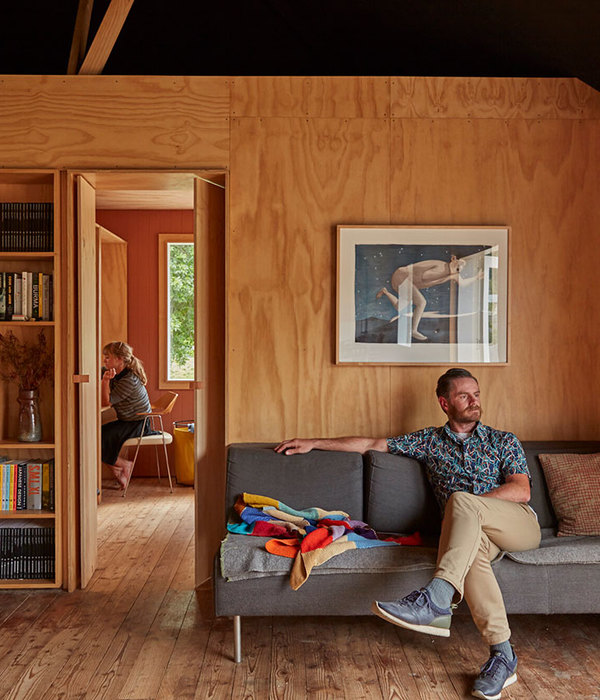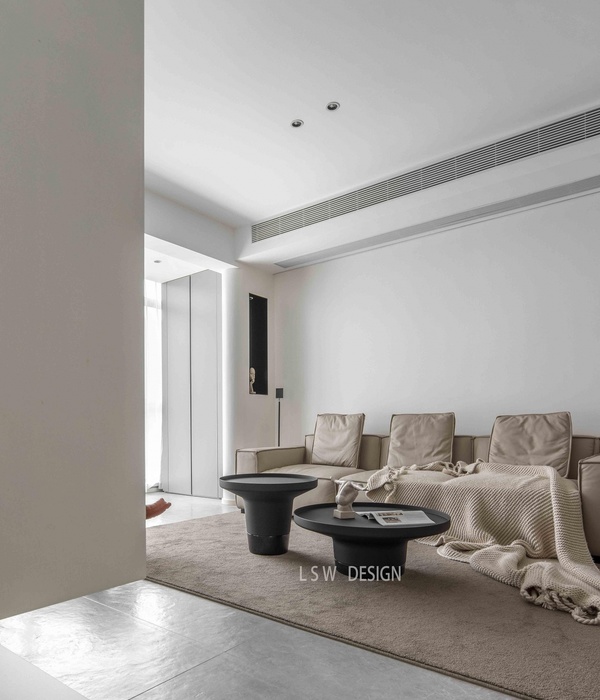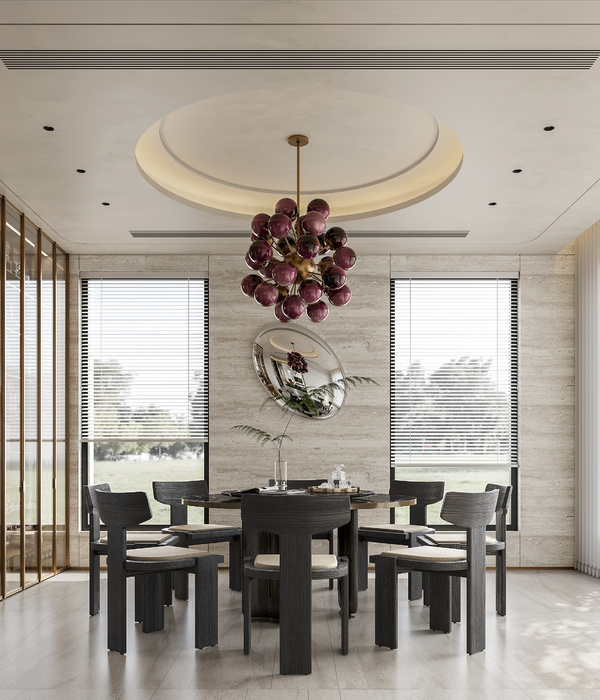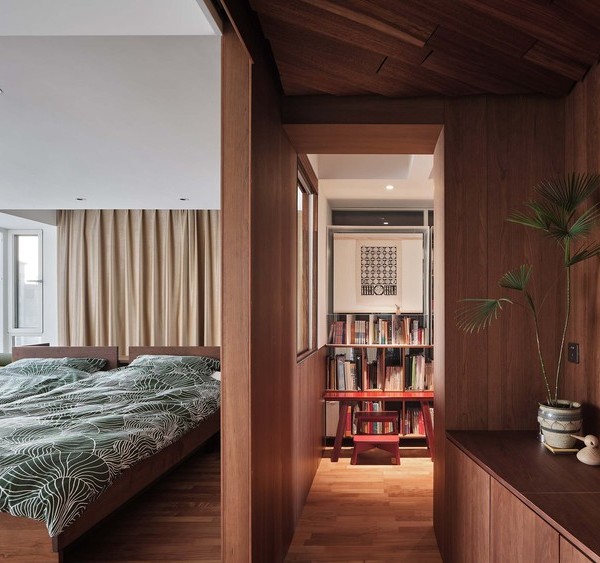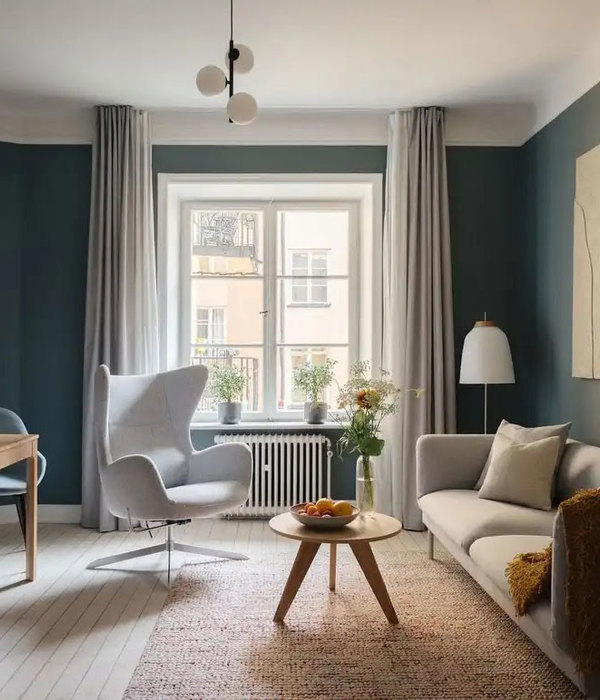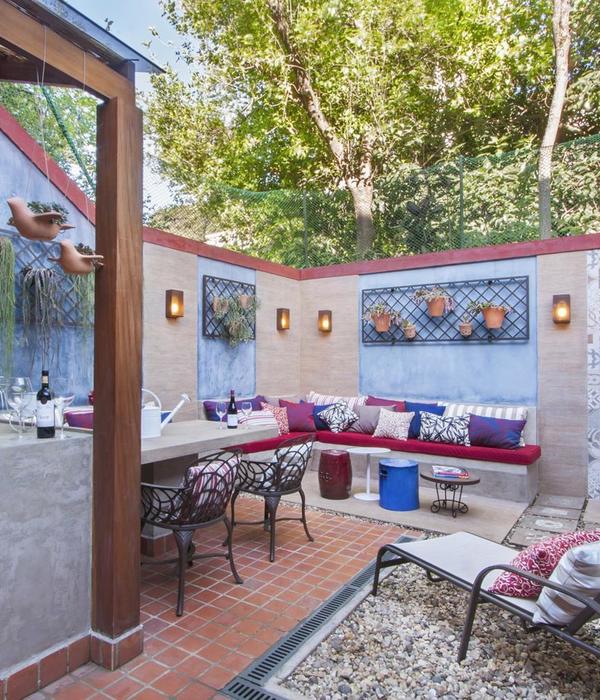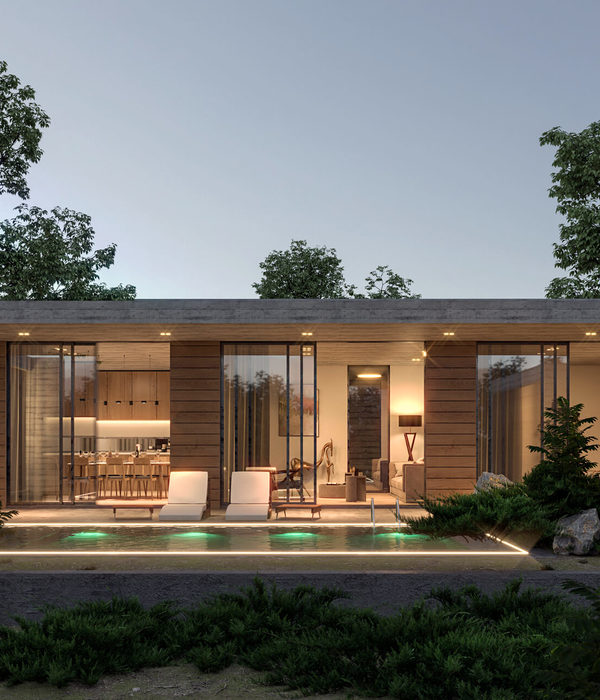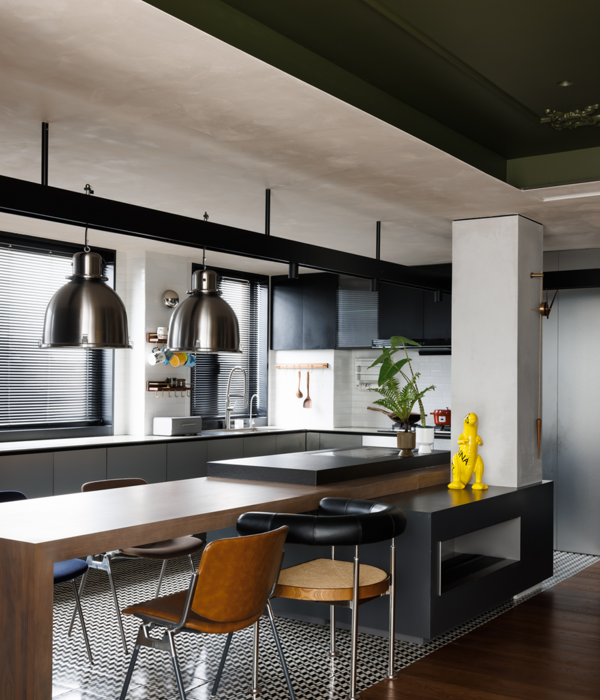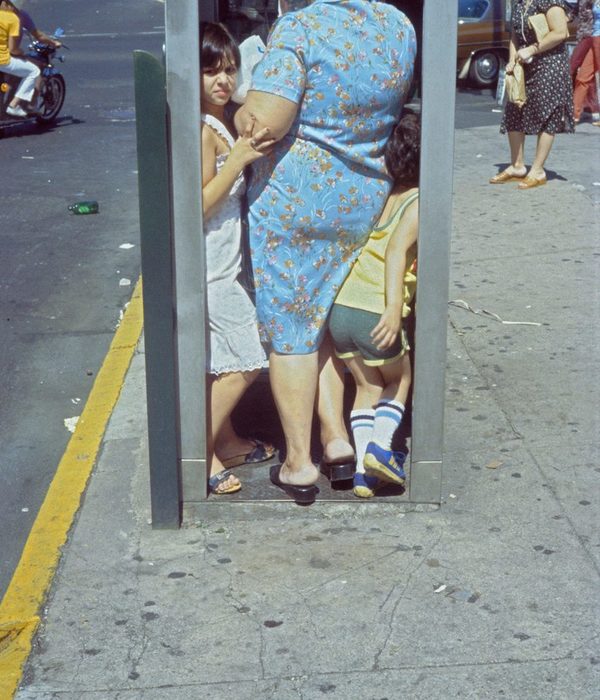Bukit Merah是温馨的生活空间,反对新加坡公共住房(又称建屋发展局公寓)不利于营造理想家庭空间的模式。该项目通过将1960年代老房子中的三居室打造成现代开放平面布局,探索了兼具公共性与私密性的住房模式。
Bukit Merah is an intimate living space opposing the mindset that Public Housing in Singapore, also known as Housing Development Board (HDB) Flats, are unconducive of interior design pertaining to the ideal space for a home. The project explores the juxtaposition of the public and the private through the contemporary open-plan of a 3-room apartment located in an aged estate dating back to the 1960s.
▼空间概览,overall view © Marc Tan
改造前,设计师和业主一致认为要保留原有的水磨石、卧室拼花地板和蓝色砖墙,以此追忆往昔。设计师还保留了整个胶合板,因为它用于木工活以及呼应蓝色瓷砖的粉刷工作,这些柔和的色调搭配在一起,使不同空间统一成整体,反映出对随着时间消失的悠闲生活节奏的怀念之情。传统的空间分区不适用于单人居所,因此设计师提出实用的开放平面布局,它可以无缝地衔接各个功能空间。开放平面布局的特点是生活空间界限的模糊,继而使厨房、餐厅和客厅作为统一整体而共存,同时保证卧室的私密性。
Prior to the spatial transformation was the shared opinion of the designer and the client to sustainably preserve the Terrazzo, bedroom parquet and the blue wall tiles as a homage to the heritage of the yesteryears. By preserving the integrity of plywood as it is for the carpentry works and a paint job matching the shade of the blue tiles, the mellow collage of shades unifying the different spaces into one reflects the nostalgia of an unhurried pace of living lost to time. The conventional partitioning of spaces does not sits well with a dwelling meant for single living, hence suggesting the pragmatism of an open plan providing a more seamless transition between programmatic spaces of the apartment. Characteristic of open plans are the ambiguous boundaries of living spaces, where in this case, the kitchen, dining and living areas co-exist as an undivided whole while respecting the privacy of the bedroom.
▼客厅,living room © Marc Tan
▼餐厅,dining room © Marc Tan
▼厨房,kitchen © Marc Tan
▼均为蓝色调的砖和漆,tiles and paint both in blue tones © Marc Tan
业主收藏热带植物的爱好使阳台具有日本掾侧(Engawa)的特征,园艺空间占据室内外,兼具公共性和私密性。滑动门界定出业主视为“私人内部空间”的边界,当它完全开启时,整个房间产生交叉通风,当它在暴雨天气关闭时,又为室内提供安全的庇护。
The client’s passion for a collection of plants unique to the tropical climate opened the opportunity for a dedicated balcony resembling the traits of a Japanese Engawa, where the gardening space is both on the inside and outside, and also, possesing the duality of publicness and privacy. Sliding doors demarcating the boundaries of what is deemed as the “private indoors” by the client– allowing for cross ventilation throughout the house when fully opened, while also providing a safe retreat when closed in the event of a heavy downpour.
▼滑动门将阳台与内部空间相隔,sliding doors separate the balcony from the interior space © Marc Tan
▼布满房间的热带植物,tropical plants all over the room © Marc Tan
设计师认为,没有体现居住者生活痕迹的室内设计是不完整的,其中,家具配置起到画龙点睛的作用。客厅置入极简的置物架和储物柜,最终装满业主珍爱的物品,散发着体现出主人热爱生活的家的魅力。
In line with the designer’s belief that home design is incomplete without the visibility of lingering traces reflecting one’s living, is the curation of furniture as a finishing touch. Minimalistic shelving and storage injected into the living room were eventually packed with cherished possessions, exuding the charm of a home truly reflecting the love for living.
▼极简的置物架和储物柜,minimalistic shelving and storage © Marc Tan
▼家具细部,details of furniture © Marc Tan
▼器皿细部,details of utensils © Marc Tan
▼平面图,floor plan © MONOCOT
{{item.text_origin}}

